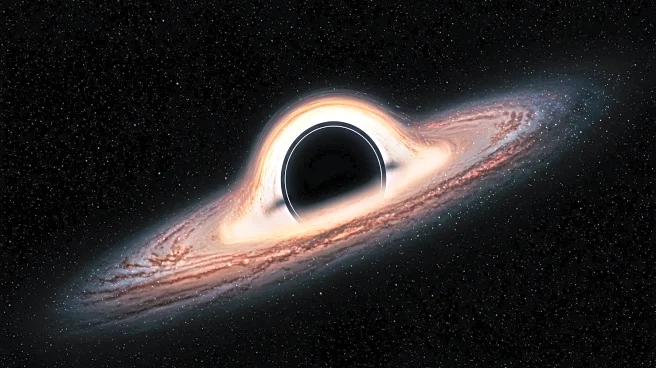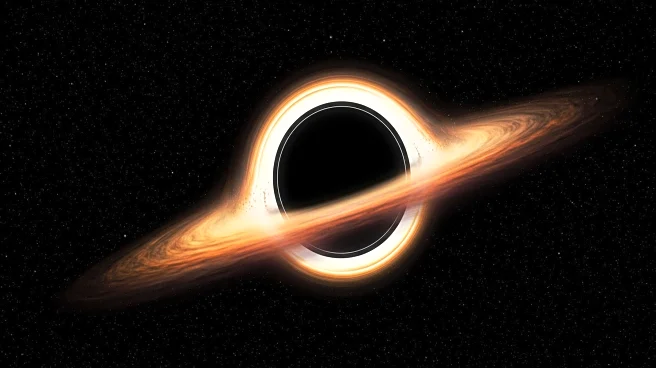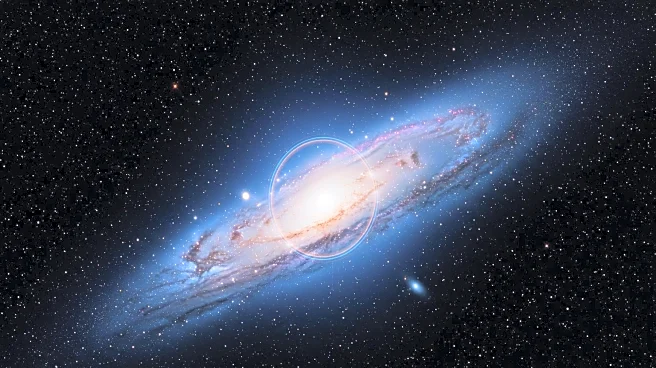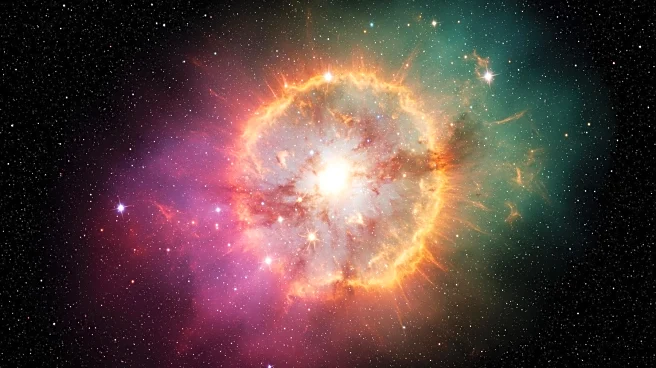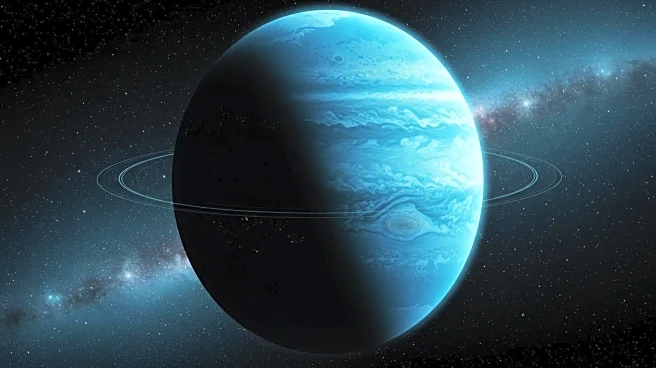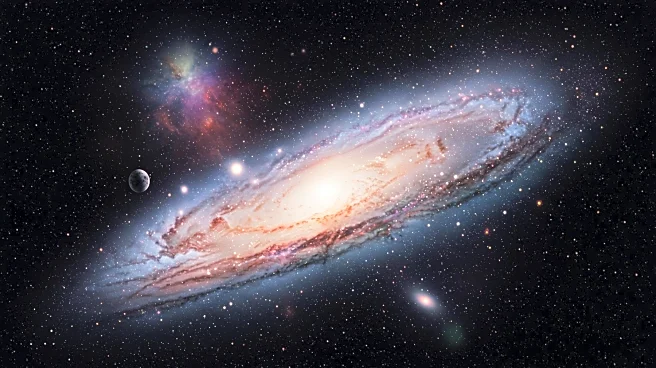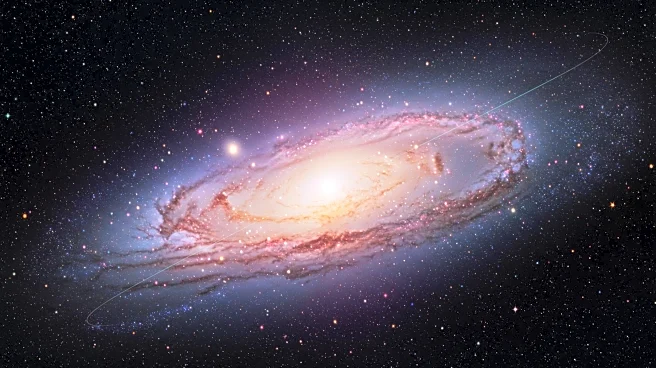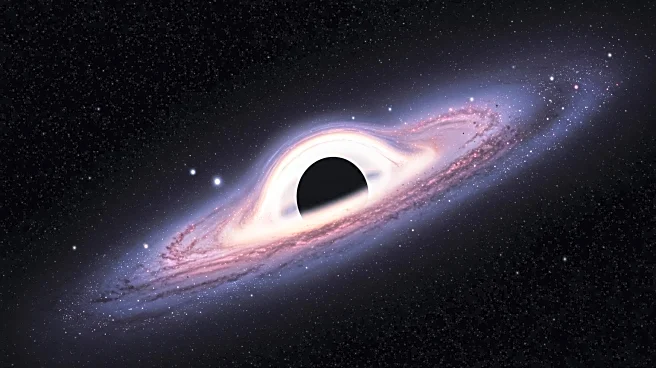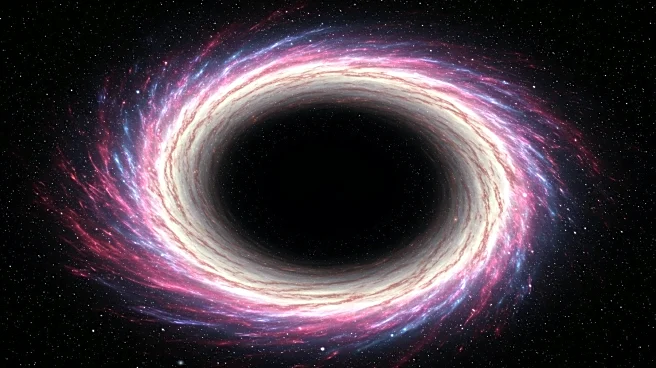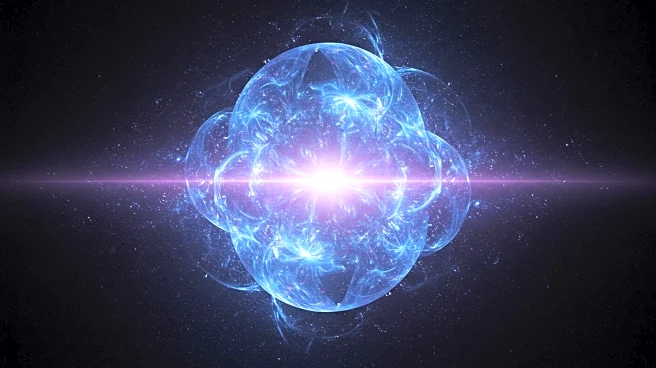Rapid Read • 8 min read
A new scientific theory suggests that black holes might convert dead star matter into dark energy, potentially explaining discrepancies in current cosmic models. This hypothesis, known as the cosmologically coupled black hole (CCBH) theory, posits that black holes could be tiny bubbles of dark energy. The theory challenges the standard model of cosmology, which assumes a constant strength of dark energy. Researchers from the Dark Energy Spectroscopic Instrument (DESI) have observed changes in dark energy over time, which align with this new theory. The idea was initially proposed by scientists Kevin Croker and Duncan Farrah and has gained traction due to its potential to explain various cosmic phenomena, including the changing rate of the universe's expansion.
AD
This theory could significantly impact our understanding of the universe's expansion and the role of dark energy. If proven, it would alter the foundational principles of cosmology, affecting how scientists interpret cosmic history and the universe's future. The hypothesis also offers a potential solution to the mystery of neutrino mass, which has puzzled physicists due to its seemingly negative value in some models. By suggesting that baryons are converted into dark energy, the theory provides a framework that aligns with observed neutrino abundance. This could lead to a paradigm shift in how scientists approach cosmic phenomena and the universe's energy budget.
Further research and data analysis are required to validate the CCBH hypothesis. The scientific community will need to scrutinize this theory extensively before it can be accepted as a new cosmological paradigm. DESI collaborators are expected to continue testing this and other unconventional hypotheses using their data. The ongoing research will likely involve collaboration with other astronomical observatories and instruments, such as the Hubble Space Telescope and the James Webb Space Telescope, to gather more evidence supporting or refuting the theory.
The CCBH hypothesis challenges traditional scientific intuition by linking large-scale cosmic phenomena with small-scale processes. This interdisciplinary approach could inspire new methodologies in physics and cosmology, encouraging scientists to explore unconventional ideas. The theory also highlights the importance of innovative thinking in addressing complex scientific mysteries, potentially leading to breakthroughs in understanding the universe's fundamental forces.
AD
More Stories You Might Enjoy
